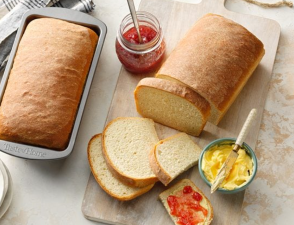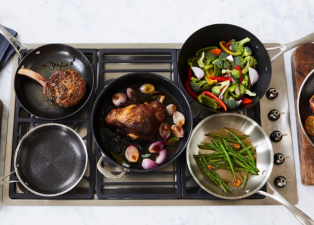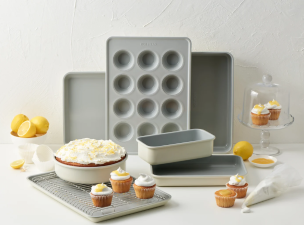Cookware Essentials for Baking Bread at Home
Bread is delicious and tasty, but many people worry about store-bought bread being high in additives or sugar and oil. They want to make healthy and delicious bread at home. So, what tools do we need to make bread at home?

Basic utensils (tools)
-A digital scale for accurately weighing ingredients is key to successful baking. A scale with an accuracy of 0.1 gram is recommended to ensure the correct ratio of flour, yeast, and other ingredients.
-A mixing bowl/dough blender is used for mixing and kneading dough. Large bowls made of stainless steel or glass are recommended for ease of use.
-A hand blender or a food processor can assist in kneading, improving efficiency.
-A rolling pin is used to deflate and shape the dough. It can be made of either wood or silicone, but ensure even pressure.
-A baking tray/mold: A basic baking tray is used to hold the risen dough.
-A toaster (such as the 450g model with lid) can be used to make square loaves, enhancing the aesthetics of the finished product.
-An oven is the core component. It should have independent temperature control for the upper and lower tubes, and a capacity of 30L or more is more practical. For budget-conscious individuals, an air fryer can be used to make small loaves. - Scraper/Knife: A plastic scraper is used to divide the dough, while a silicone scraper is used to clean any residue in the container. An integrated, heat-resistant model is preferred.
-Instead of a professional proofing box, a sealed box or a large bowl covered with plastic wrap can be used as a fermentation container to keep the dough warm and moist.
Basic Ingredients
-High-gluten flour has a high protein content (over 12%), which is essential for the bread's gluten and elasticity. It is recommended for beginners.
-Yeast: Either dry or fresh yeast can be used. It needs to be activated with warm water (around 35°C) to promote fermentation. Store away from moisture.
-Salt and Sugar: Salt enhances flavor and inhibits yeast over-fermentation, while sugar provides nutrients for the yeast and adds sweetness. The ratio is typically 1-2% of the total flour content.
-Water/Milk Water is the base liquid. Milk can be substituted for water to enhance flavor and soften the dough. The amount should be adjusted according to the dough's moisture content.
-Fats: Vegetable oil or butter can enhance the bread's softness. It is recommended to add them later in the kneading process to avoid affecting gluten formation.


